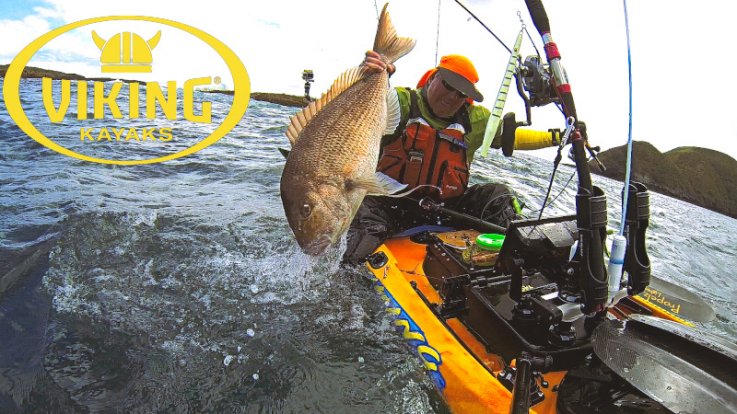Hunting big snapper out of the kelp this winter
2:15AM 20th May 17

Hunting big fish out of the kelp this winter
Stephen Tapp has proven time and again the effectiveness of fishing in close, resulting in some great catches over the winter months. With Covid 19 restrictions, the idea of kayak fishing in close might just hold a lot of appeal after reading these great tips. Make sure you share your catches with us in the Viking Owners Group HERE
Update: many of these tips are around bait usage as that was the theme at the time of writing these. The techniques can be substituted for soft plastics)Now the colder months are here and water temperatures are dropping I thought I’d take a step back in time and revisit some of the fishing systems and areas I started with when first getting into kayak fishing. I had a gentle reminder of just how good some of these classic “lob big baits, catch big fish” techniques can be during the recent Taranaki Kayak Classic.
On day two of the tournament, the windy and choppy conditions along our chosen part of the coast forced us to stay in close. As a result, my teammate and I chose to anchor and berley before lobbing baits down the wind-driven current in shallow water. The ensuing action reminded me of my kayak fishing roots and also resulted in a couple of trips to the podium during prize giving!
Big baits, big fish! How many times have we heard this adage?

Certainly, when I was land-based fishing this was one of my favourite catch cries. There was nothing like lobbing monster baits into the berley trail and letting the pickers have a field day, while in turn, their thrash-and-slash activity attracted the attention of resident moochers.
Over the years one of my core secrets to catching good fish has been using the best possible bait. Fresh or frozen, perfect baits should be good enough to eat – in other words, food-grade. This is even more critical when considering baits like pilchards, which quickly lose their shine and can become soft and unusable when not stored correctly. With cut baits, any ‘stink’ means they’re not fresh and long past their use-by date! In fact, I rate this so highly when purchasing frozen baits, the first thing they have to pass is the whiff test!
Stephen goes into more detail on this subject in the blog Strip Baits & Other Baits READ THE FULL ARTICLE HERE
Presenting BAITS –The swimming pilchard rig and other classics
‘with this rig, the pilchard can be twitched gently like a soft bait to create movement and action resulting in some successful hunter-gathering.’
Let’s take a look at the terminal rigs I’m using. As with every aspect of our sport, there’s more than one way to hook your fish, but here we’re considering what I refer to as my ‘classic rigs’ and how they’re used. I’ve refined them a little over the years, but the concept and how they work remains the same, even 20 years down the track.
For me the key point has always been to consider bait presentation above all else when rigging up; it’s all about getting fish to bite. This approach has had a huge influence on the rigs I choose to use; unless you’re cubing, the bait needs to look as natural and alive as possible. In fact, over the years I’ve gained my best successes by thinking of my dead and cut baits as lures rather than simply some hunk of flesh relying on flavour appeal to entice a strike.
Stephen goes into more detail on this subject in the blog Presenting Baits Succesfully READ THE FULL ARTICLE HERE
The Big Berley Bash - best practises when using berley

Most fishers I know are familiar with berleying concepts. It’s certainly a regular topic of discussion amongst land-based and boating anglers back at the club, but a less common practice amongst kayak anglers. In part, this is due to many fishers almost entirely adopting lure-fishing methods (soft-baits and slow-jigs in particular), which are considered drift-fishing techniques and where berleying isn’t necessary (berleying and cubing is best done from anchor or over an extremely slow drift). In reality, though, I’ve had some great successes lazily working lures through berley trails.
Stephen goes into more detail on this subject in the blog The Big Berley Bash READ THE FULL ARTICLE HERE
When stray lining for snapper do you anchor & burley?
I don't often anchor up, preferring to hunt snapper down with the sounder or drift over wider areas prospecting for them. On those occasions when I do anchor (usually because the weather is too bad for my usual tricks) I also prefer to berley. Typically I place my berley bag around 2m below the kayak on a light cord unless I'm in water more than 20-30m deep. This allows me to see where the trail is running so I can keep my baits going in the appropriate direction.
Stephen goes into more detail on this subject in a Q&A blog READ THIS Q&A SESSION HERE
Want more kayak fishing tips? Sign up to our newsletter for the latest info





